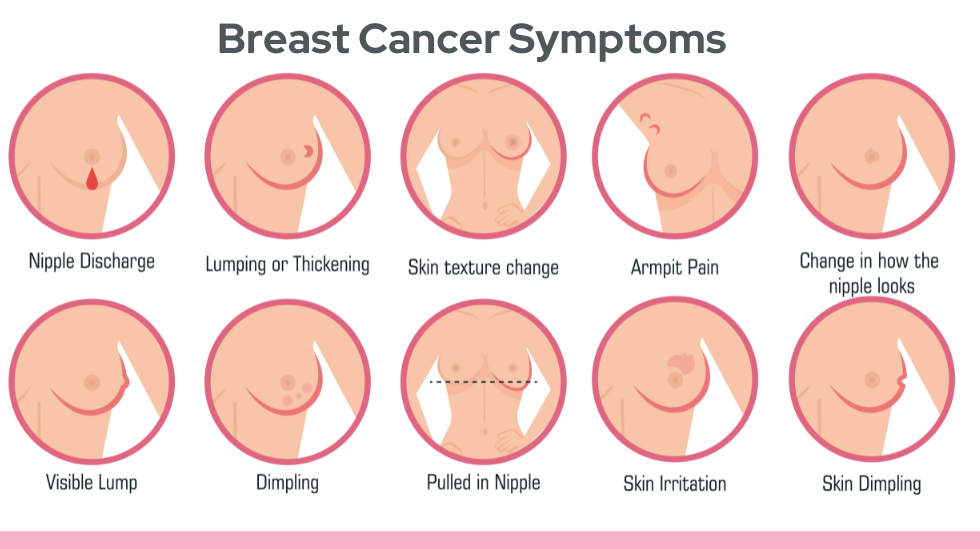Published: September 20, 2024
What Does Breast Cancer Look Like?
By Lana Shikhman, MD, FACS of Elliot Breast Health Center
Breast cancer is one of the most common cancers worldwide. According to the American Cancer Society, about 1 in 8 women in the United States will develop breast cancer over the course of their lifetime. In 2023, it was estimated that about 297,790 new cases of breast cancer would be diagnosed in women in the U.S., and about 43,700 women would die from the disease. Knowing your risk and recognizing the symptoms of breast cancer can increase your chances of survival.
Breast cancer risk factors
Several factors may increase the risk of breast cancer, including:
- Family history or inherited DNA changes: Mutations like BRCA1 and BRCA2 increase risk. Link to upcoming high-risk/genetic testing article
- Personal history of breast cancer or certain breast conditions: Previous breast cancer or conditions like LCIS and atypical hyperplasia raise the risk.
- Early menstruation or late menopause: Starting menstruation before age 12 or menopause after age 55 increases risk.
- Gender: Women are more likely than men to develop breast cancer.
- Dense breast tissue: More dense tissue can make it harder to detect cancer on a mammogram.
- Alcohol consumption: Drinking alcohol raises breast cancer risk.
- Older age at first childbirth or never having been pregnant increases the risk.
- Increasing age: Risk rises as you age.
- Obesity: Higher BMI is linked to an increased risk.
- Radiation exposure: Past radiation treatments to the chest increase risk.
What does breast cancer look like? The signs and symptoms of breast cancer
Breast cancer can appear in several ways. Be aware of the following signs and symptoms: 
- A breast lump or thickened area of skin that feels different from the surrounding tissue
- A nipple that looks flattened or turns inward
- Changes in the color of the breast skin. The breast skin may look pink or red in people with white skin. In people with brown or black skin, the breast skin may look darker than the other skin on the chest, or it may look red or purple
- Change in the size, shape, or appearance of a breast
- Changes to the skin over the breast, such as skin that looks dimpled or like an orange peel
- Peeling, scaling, crusting, or flaking of the skin on the breast
- Pain or swelling in the armpit
What to do If you think you have breast cancer
If you suspect you have breast cancer, it is essential to act quickly. Schedule a doctor's appointment right away if you notice any changes in your breast. Do not wait for your next appointment or mammogram. Early detection is key to successful treatment. Even if a recent mammogram was clear, report any new changes to your healthcare provider.
The critical importance of regular mammograms
Regular mammograms are critical for early detection of breast cancer. Mammograms can identify tumors that are too small to be felt and detect breast cancer before symptoms develop. The American College of Radiology and American Society of Breast Surgeons recommend that women aged 40 should start annual breast cancer screening with mammograms. Patient and provider’s shared decision determines when to stop the mammographic screening schedule.
Final thought
U.S. breast cancer death rates have been declining for several decades due to advancements in prevention, early detection, and treatment. Remember to schedule your mammogram and be sure that those around you do the same. Learn more about preventing breast cancer at (link to Dr. Feldman’s podcast). Together, we can save lives.

 Dr. Lana Shikhman practices at Elliot Breast Health Center in Manchester, New Hampshire and is board-certified by the American Board of Surgery. She is a member of the American College of Surgeons, the American Society of Breast Surgeons, and a member of Women in Surgery. Dr. Shikhman is Hidden Scar certified.
Dr. Lana Shikhman practices at Elliot Breast Health Center in Manchester, New Hampshire and is board-certified by the American Board of Surgery. She is a member of the American College of Surgeons, the American Society of Breast Surgeons, and a member of Women in Surgery. Dr. Shikhman is Hidden Scar certified.
Resources
